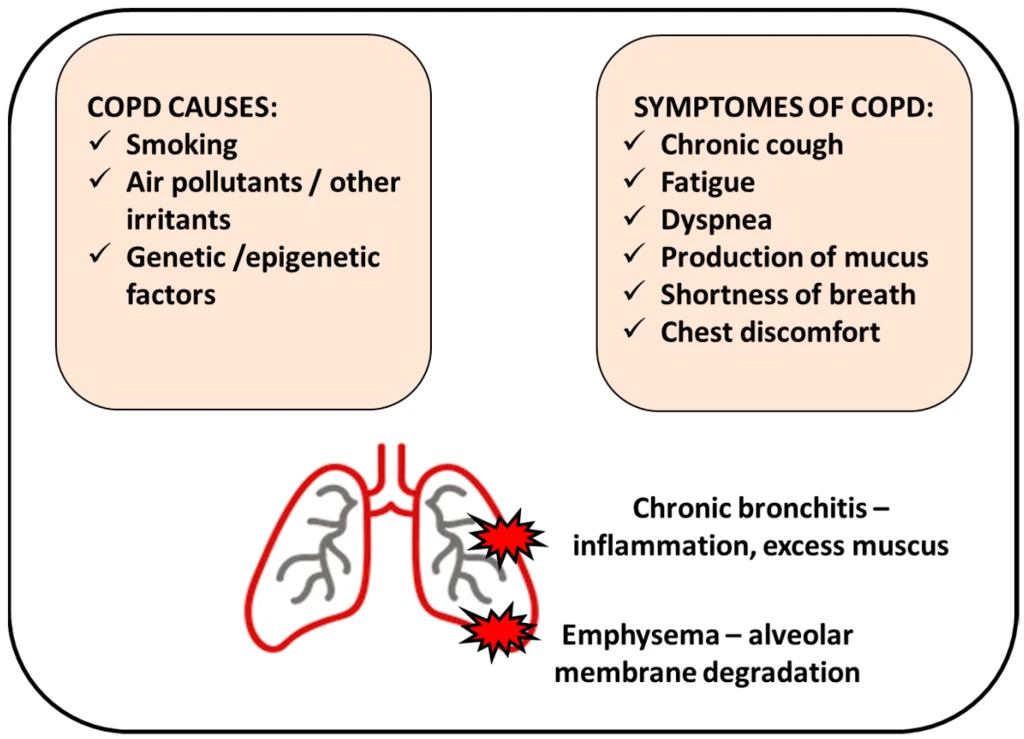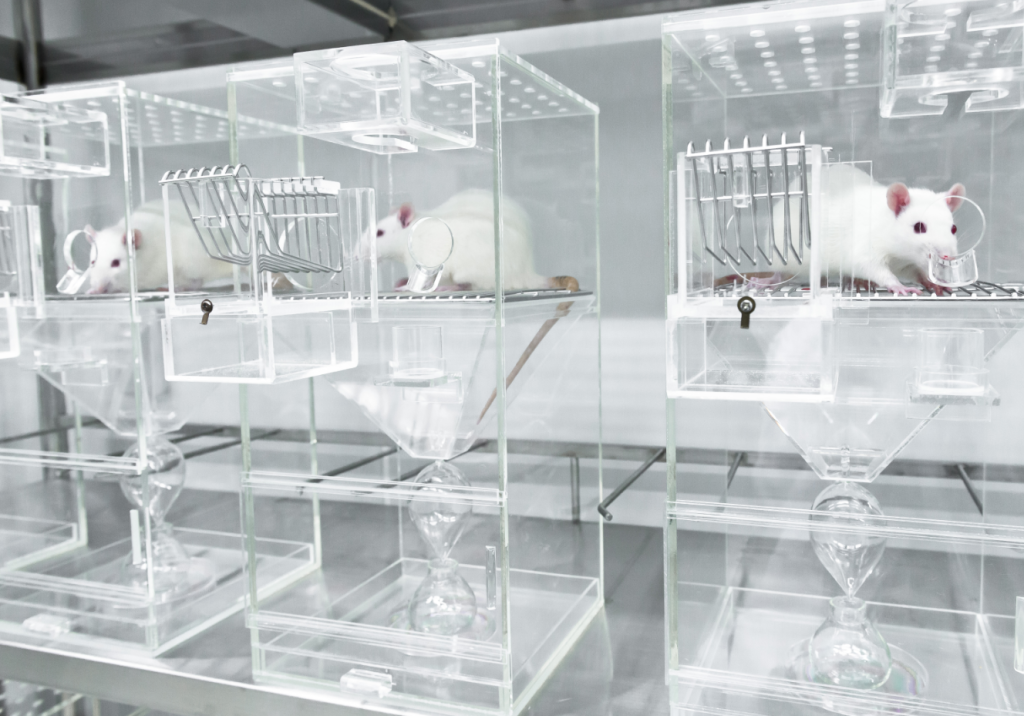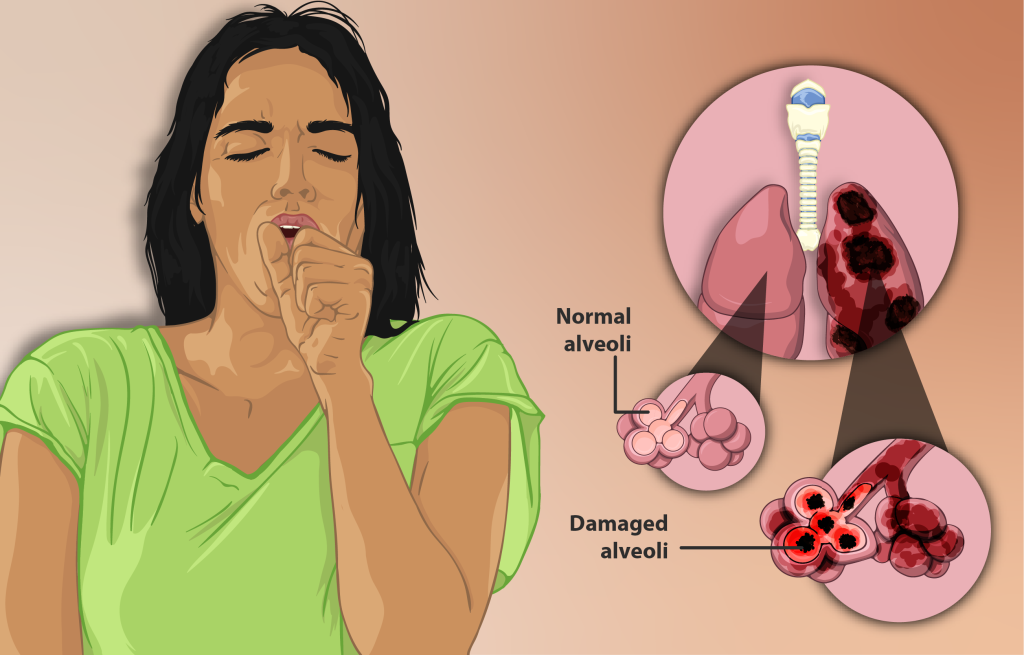What is COPD?
Chronic obstructive pulmonary disease (COPD) is a chronic airway inflammatory disease characterized by progressive airflow limitation. The main symptoms are cough, expectoration, and progressive worsening dyspnea. As of 2017, COPD has become the third-largest cause of death in the world and the eighth-largest cause of life loss globally in 2019. The above data suggest that COPD has attracted widespread attention as a global public health issue. Wednesday in the third week of November every year is World COPD Day. It was initiated and established by the Global Initiative for Chronic Obstructive Pulmonary Disease (GOLD) in 2002. The purpose is to increase public understanding and attention to COPD as a global health issue.
Effect of COPD on the Lung
COPD is a common chronic respiratory disease. It is accompanied by an increase in the chronic inflammatory response of the airways and lungs to harmful particles or gases, resulting in obstruction of respiratory flow, difficulty breathing, and often accompanied by coughing, expectoration and other discomfort. Most of the things people often call “chronic bronchitis” and “emphysema” belong to chronic obstructive pulmonary disease. The lungs of the human body are like an inverted tree, the trachea and bronchi at all levels are like tree trunks and branches, and the alveoli are like tree crowns. The airflow flows in the trachea, bronchi at all levels, and alveoli. The farther the branch becomes, the narrower the channel of the airflow becomes. Chronic obstructive pulmonary disease can cause bronchial obstruction and alveolar destruction, which together lead to airflow restriction. As a result, patients will experience difficulty breathing, which will gradually worsen, which is also a landmark symptom of COPD.
What Factors Can Easily Lead to COPD?

Figure 1. Risk factors and symptoms of COPD.
The incidence of COPD may be the result of long-term interaction between multiple environmental factors and the body’s own factors.
(1) Smoking: Smoking is the most important causative factor for COPD. The incidence of COPD in smokers is 2-8 times higher than that in non-smokers. And the longer you smoke and the greater the amount you smoke, the higher the risk of developing COPD. Passive smoking (i.e. second-hand smoke) can also cause varying degrees of COPD depending on the smoke concentration in the environment and contact time.
(2) Inhalation of occupational dust and chemical substances: In the absence of protection, long-term contact or repeated inhalation of dust and chemical substances with excessively high concentrations, such as organic and inorganic dust, industrial waste gas, allergens, smoke, etc., can lead to the occurrence of chronic obstructive pulmonary disease.
(3) Air pollution: People who have lived in areas with severe air pollution for a long time inhale large amounts of harmful gases such as sulfur dioxide and chlorine to continuously stimulate the respiratory tract, leading to chronic airway inflammation, which is also an important cause of chronic obstructive pulmonary disease.
(4) Long-term exposure to biofuels: In some areas, a large amount of smoke generated when people use firewood, wood, charcoal, crop poles and animal manure for cooking or heating for a long time leads to indoor air pollution and may also lead to chronic obstructive pulmonary disease.
(5) Infection: Respiratory infection is another important factor in the development of COPD. Infections such as viruses, bacteria, and mycoplasma can cause airway damage and airway inflammation. Infection is also a common cause of acute exacerbation of COPD. A history of severe respiratory infections in childhood is associated with reduced lung function and respiratory symptoms in adulthood. Creative Diagnostics’ pathogen infection animal model platform provides high-quality pharmacodynamic evaluation services for the treatment of bacterial respiratory infections.
(6) Other factors: It is now believed that the relatively clear individual susceptibility factor is the lack of the α1-antitrypsin gene. In addition, airway hyperresponsiveness is also considered to be an important risk factor for the development of COPD. The incidence of COPD is related to the patient’s socioeconomic status.
Researchers speculate that the incidence of COPD is related to genetic factors, and it is currently believed that the incidence of COPD is related to the interaction of multiple genetic mutations and environmental factors. Despite extensive research, little is known about the potential mechanisms of COPD at the molecular level, so there are currently no effective treatment drugs. Animal models are an important tool for studying the pathogenesis, prevention, and treatment options of human diseases and identifying potential treatment targets and biomarkers. They provide a valuable, ethically and economically feasible experimental platform for research and play an important role in the development of medicine.
Animal Models of Chronic Obstructive Pulmonary Disease
The lung anatomy of COPD animal models should be similar to that of humans in order to better simulate the pathophysiological characteristics of human COPD. Currently, there are many types of animals for establishing COPD models, such as rats, mice, dogs, sheep, rabbits, monkeys, miniature pigs, etc. Among them, small rodents are the most commonly used COPD and AECOPD models. Rats and mice have short life cycles, many strains, are easy to raise, grow quickly, have a gentle temperament, and have low breeding and reproduction costs; their physiological and pathological characteristics are many similar to those of humans. Its advantages include clear genetic background, good operability, low breeding and maintenance costs, saving manpower and material resources, etc. Most researchers choose SPF Wistar rats, SD rats, C57BL/6 mice, BALB/C mice, Kunming mice, etc. as animal models to simulate COPD and AECOPD.

Creative Diagnostics focuses on using respiratory pathogens to infect model animals to accelerate research to clarify the mechanisms and treatments involved. These services include animal models of the bacterial respiratory tract (including the determination of MCLD, probability of survival, lung bacterial load, and histopathological analysis), assessment of vaccine immunogenicity, challenge protection testing, in vitro antibacterial testing, serum sterilization testing and plaque testing.
Respiratory bacterial infection models
Bacterial infection is considered to be the main cause of acute exacerbation of COPD. Pseudomonas aeruginosa infection is the most common among patients with COPD, so it is often used to build COPD models. Bacterial colonization induces chronic inflammation that drives progressive airway obstruction. In addition, a weakened immune response results in permanent colonization or failure to clear the pathogen.
Respiratory virus infection models
Studies have shown that patients with chronic obstructive pulmonary disease have increased susceptibility to influenza A virus (IAV) and experience excessive immune responses after infection. In acute and chronic cigarette smoke exposure models, increased lung and systemic inflammation, reduced virus clearance, and reduced response to bronchodilators were observed after IAV infection. The excessive immune response observed after cigarette smoke exposure was associated with increased expression of Toll-like receptor 3 in the lungs of mice.
COPD can cause changes in patients’ lung function and form lung pathological changes, which seriously affects patients’ quality of life. Exploring its pathogenesis and related molecular markers is of great significance for clinical diagnosis and treatment. Establishing an animal model of human diseases, and through comparative research with human diseases, we can deeply explore the pathogenesis of the disease, find therapeutic targets and pathways, and develop therapeutic drugs, which is of great significance to disease research. However, the physiological and pathological differences between animals and humans, the unclear mechanism of induction methods, and the lack of unified standards for animal model evaluation have all had a certain impact on the study of animal models of COPD. Creative Diagnostics provides customers with good COPD animal models: they have similar anatomical, physiological, and pathological characteristics to humans, and the modeling methods have certain specifications to facilitate repeated reproduction, and researchers can select corresponding model animals and modeling methods according to different experimental purposes. At the same time, we will continue to improve animal models of chronic obstructive pulmonary disease to ultimately further understand, define and treat COPD.
References
1.Czarnecka-Chrebelska, Karolina H., et al. Biological and genetic mechanisms of COPD, its diagnosis, treatment, and relationship with lung cancer. Biomedicines. 11.2 (2023): 448.
2.Berenson, Charles S., et al. Impaired alveolar macrophage response to Haemophilus antigens in chronic obstructive lung disease. American journal of respiratory and critical care medicine. 174.1 (2006): 31-40.
3.Chen-Yu Hsu, Alan, et al. Targeting PI3K-p110α suppresses influenza virus infection in chronic obstructive pulmonary disease. American journal of respiratory and critical care medicine. 191.9 (2015): 1012-1023.
4.Kimura, Genki, et al. Toll-like receptor 3 stimulation causes corticosteroid-refractory airway neutrophilia and hyperresponsiveness in mice. Chest. 144.1 (2013): 99-105.

